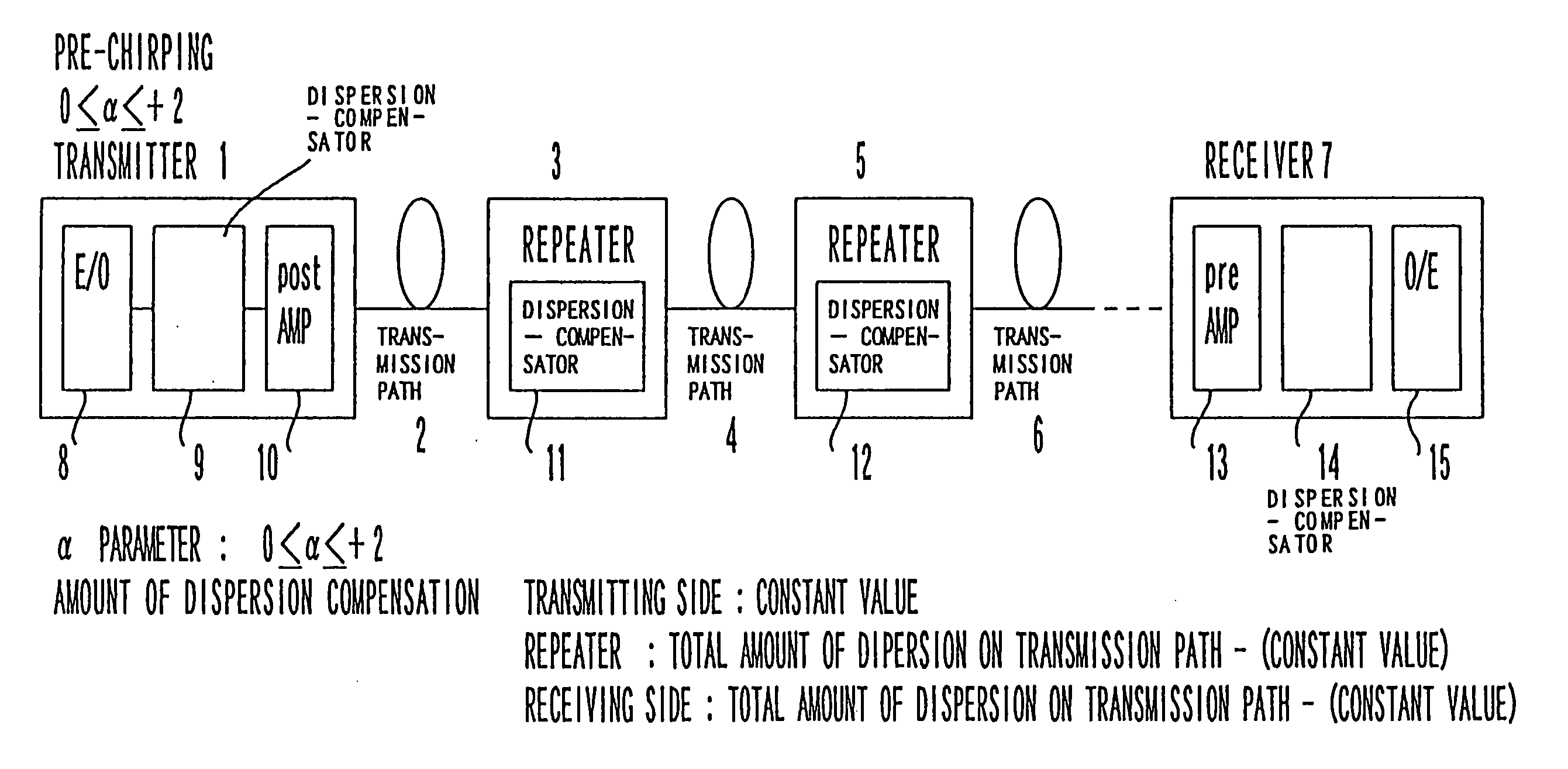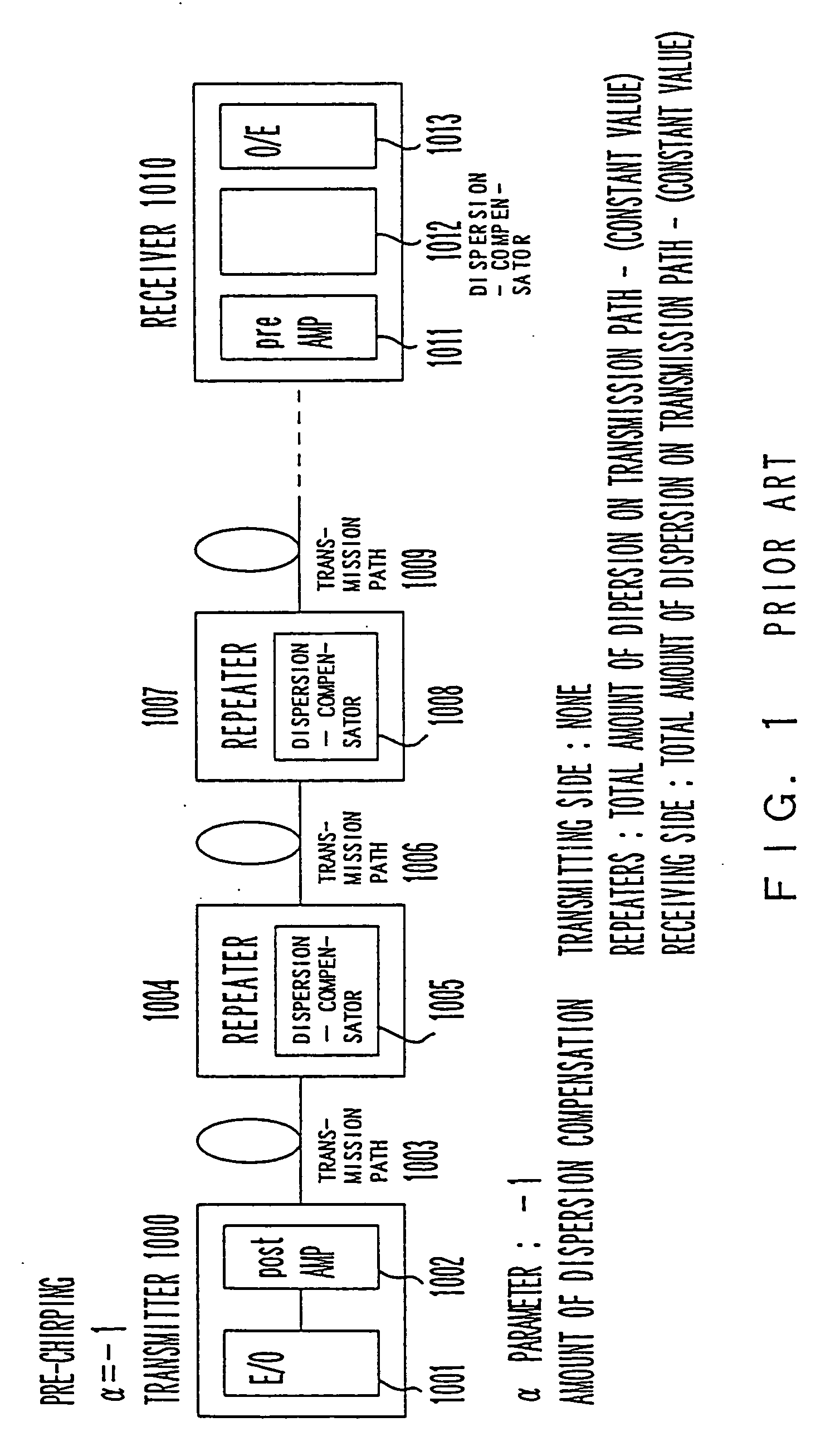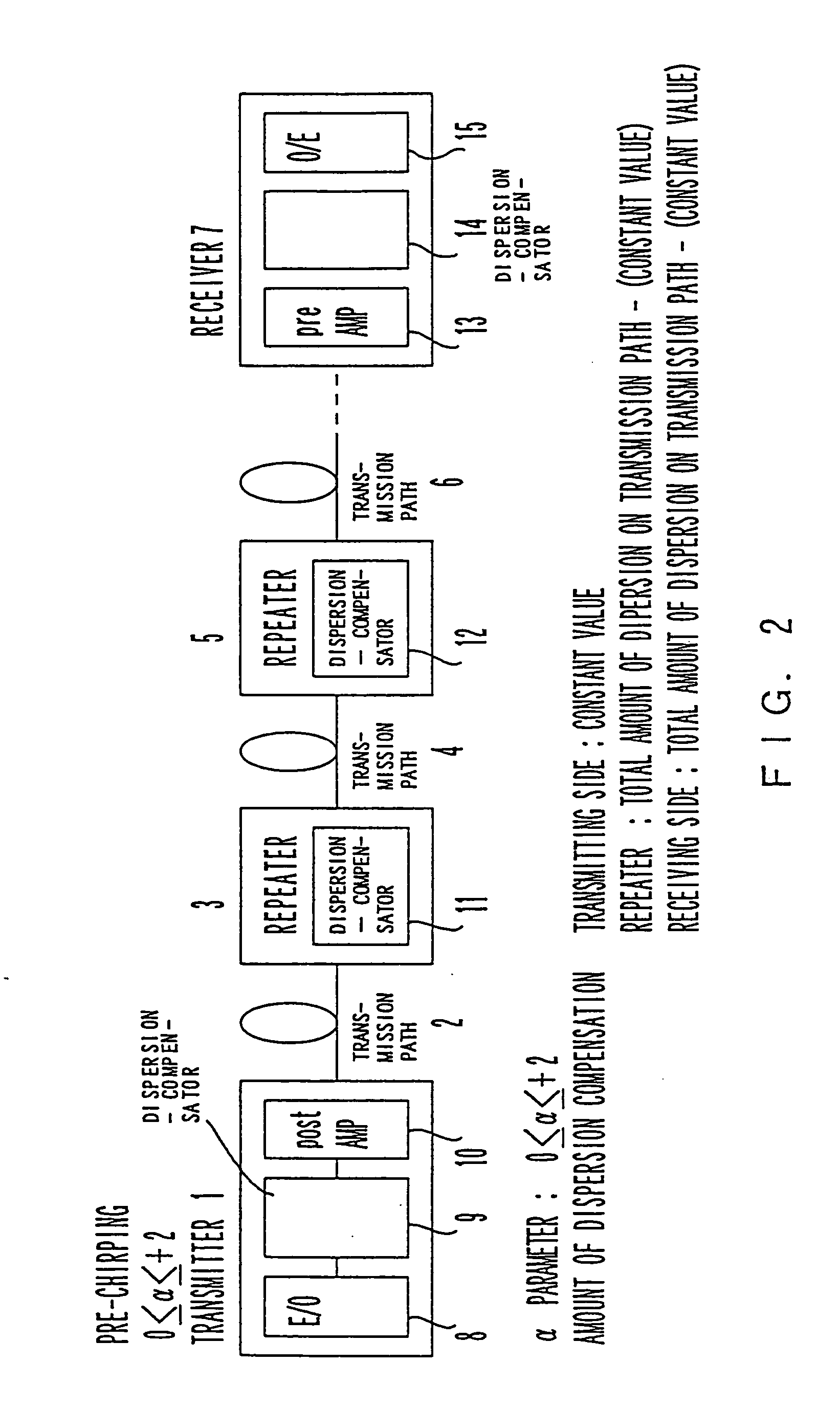Optical transmission system using in-line amplifiers
a transmission system and amplifier technology, applied in optical transmission, electromagnetic transmission, electromagnetic transceivers, etc., can solve the problems of reducing s/n ratio, reducing s/n ratio, amplifying spontaneous emission lights, etc., to prevent the waveform of optical signals from being degraded, and reducing the cost of production.
- Summary
- Abstract
- Description
- Claims
- Application Information
AI Technical Summary
Benefits of technology
Problems solved by technology
Method used
Image
Examples
Embodiment Construction
[0037]FIG. 2 is a schematic diagram showing the basic configuration of an optical transmission system according to an embodiment of the present invention.
[0038] In this figure, a transmitter 1 and a receiver 7 are connected by transmission paths 2, 4, 6, . . . and repeaters 3, 5, . . . . The transmitter 1 is composed of an E / O (Electric-to-optical signal converter) 8, a dispersion-compensator 9 and a post-amplifier 10. The E / O 8 is intended to convert an electric signal into an optical signal. The dispersion-compensator is intended to perform a predetermined amount of dispersion compensation on the side of the transmitter 1. The post-amplifier 10 is intended to amplify an optical output in order to allow the optical signal to be transmitted farther along a transmission path. In addition, red chirping whose α parameter ranges between 0 and +2 is performed on the side of the transmitter 1, according to the present invention. The amount of dispersion compensation of each of the disper...
PUM
 Login to View More
Login to View More Abstract
Description
Claims
Application Information
 Login to View More
Login to View More - R&D
- Intellectual Property
- Life Sciences
- Materials
- Tech Scout
- Unparalleled Data Quality
- Higher Quality Content
- 60% Fewer Hallucinations
Browse by: Latest US Patents, China's latest patents, Technical Efficacy Thesaurus, Application Domain, Technology Topic, Popular Technical Reports.
© 2025 PatSnap. All rights reserved.Legal|Privacy policy|Modern Slavery Act Transparency Statement|Sitemap|About US| Contact US: help@patsnap.com



